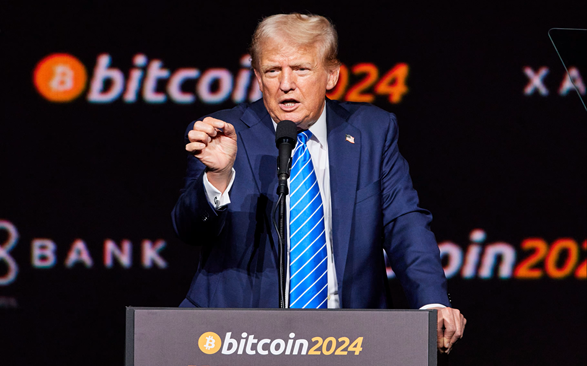The recent price surge in bitcoin (BTC) has caught the attention of many, including non-crypto natives. While many have attributed the positive development to Donald Trump’s emergence as the 47th president of the United States, co-founder of OnRampBitcoin Jesse Myers says the political shift isn’t the “main story” behind BTC’s current growth.
BTC reaches a new all-time high above $93,000
The largest cryptoasset by market capitalization, BTC, is trading above $93,000 at the time of writing, up over 40% in the past 30 days. This price surge has taken the cryptoasset’s market cap above $1.81 trillion with the global crypto market cap sitting above $3.18 trillion.
With this valuation, the crypto market as a whole now ranks as the world’s eighth-largest “economy” in terms of Gross Domestic Product (GDP), following the United States, China, Germany, Japan, India, the United Kingdom, and France.
Compared to traditional financial giants, the crypto market is now more valuable than Microsoft and is rapidly closing in on Nvidia and Apple, according to Google Finance.
Bitcoin itself is a major contributor to this growth, with its market cap exceeding $1.81 trillion at the time of writing—higher than Silver’s market cap and Spain’s GDP, according to data from the International Monetary Fund (IMF).
Read also: Predictions and Analyses: Bitcoin Price before and after the US Election
Read also: Altcoin season to be triggered by bitcoin boost—HashKey Capital forecasts
Trump’s presidency boosts BTC growth, but the fourth bitcoin halving is the main catalyst.
According to Myers, this growing upward momentum in the price of BTC follows a clear pattern seen in past years. As explained in his X post, this bullish trend ties back to a key event earlier this year—the fourth bitcoin halving in April 2024.
However, he acknowledged that the incoming administration, which will be led by President Trump, has added to the positive stance toward BTC and other cryptoassets. But, as he highlighted, this is only part of the story.
“Yes, the incoming Bitcoin-friendly administration has provided a recent catalyst,” Myers said. “But that’s not the main story here,” he added. He explained: “The main story here is that we are 6+ months post-halving. And that means a supply shock has accumulated. There’s not enough supply available at current prices to satisfy demand. Supply-demand price equilibrium must be restored. The only way to do that is for the price to go higher, which will flywheel into mania and a bubble, but that’s how this thing works.“
Read also: What is bitcoin halving and why does it matter to crypto investors?
Notably, the halving cycle has become a predictable factor in BTC price growth. After each halving event in the past, BTC has always skyrocketed. This happened in 2012, 2016, and 2020 — each time leading to a major price run-up as investors rushed to buy BTC in the face of limited supply.
“It sounds crazy to say there will be a reliable, predictable bubble every four years,” Myers said. But because BTC’s new supply is cut in half, this pattern has repeated itself. “There’s never been an asset in the world where new supply creation is halved every four years,” he also pointed out. This unique design creates strong cycles in BTC’s price, often leading to what some call a “bubble.”
While the term “bubble” suggests a temporary spike, the top exec sees this as part of BTC’s natural growth pattern. With each halving, demand rises and supply falls, creating a “flywheel” effect where prices continue to increase, he concluded.
Read also: Bitcoin sets a new all-time high at $87k. What is driving the momentum?
Ndianabasi Tom A crypto journalist and content writer who has been talking about cryptocurrency and blockchain technology since 2018, Ndianabasi is a Writer at Crypto Asset Buyer (CAB).
Discover more from Crypto Asset Buyer
Subscribe to get the latest posts sent to your email.



